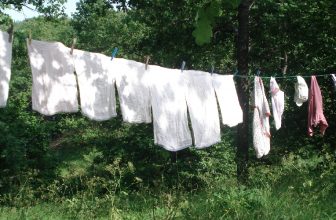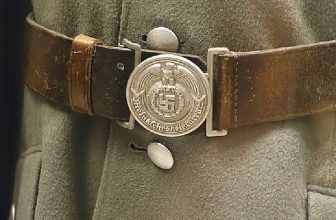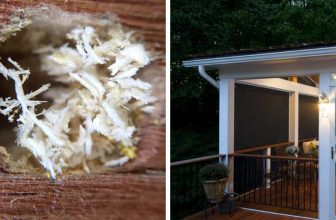How to Cover Electrical Cords Outside
Looking for a way to cover electrical cords outside without spending a fortune? Check out this article! In this article, I will show you how to cover electrical cords outside. You can use inexpensive materials to create a cord cover to protect your cables from the elements. Plus, you’ll be able to hide them from view, so they don’t ruin the appearance of your yard or patio. So get creative and start covering those cords today!
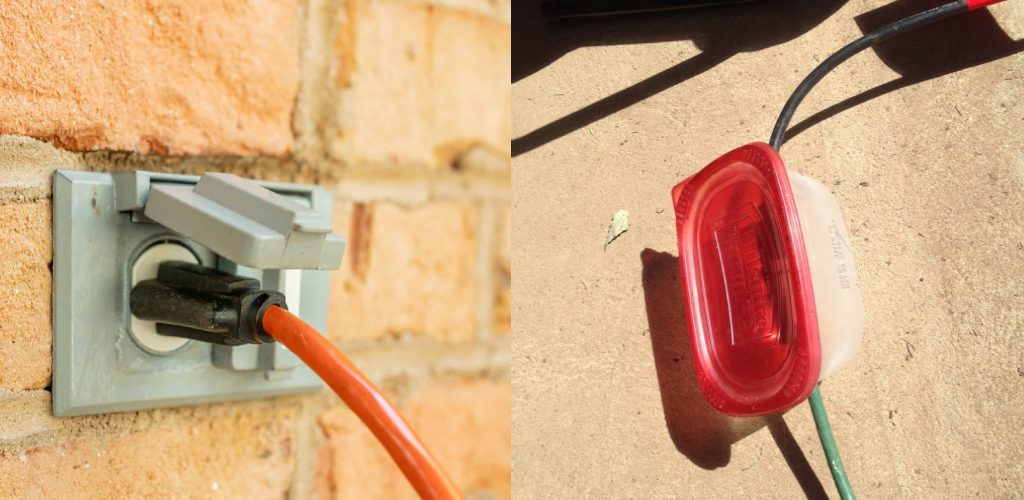
Electrical cords can be a safety hazard if they are not properly covered. If you have cords running through your yard or garden, it is vital to cover them to protect both people and animals. It is also essential to cover them to keep them from being an eyesore. There are many ways to cover electrical cords outside, but the most important thing is to use materials that will stand up to the elements.
Do Outdoor Extension Cords Need to Be Covered?
Unfortunately, it isn’t a simple yes or no. It depends on the specific cord and the conditions it will be exposed to. For example, if you’re using an extension cord in an area prone to moisture, it’s a good idea to cover it with a waterproof material like duct tape. This will help to prevent the cord from shorting out if it should happen to get wet.
However, if you’re using an extension cord in a dry area, there’s no need to cover it. Just keep it away from sharp objects that could damage the insulation. With a little bit of care, your extension cord should last for many years.
Why Should You Cover Outdoor Electrical Cords?
It is essential to cover outdoor electrical cords for a few reasons. The first reason is safety. If the cord is not correctly covered, it could be a tripping hazard. Additionally, if the cord is not properly protected, it could become damaged and pose a shock or fire hazard.
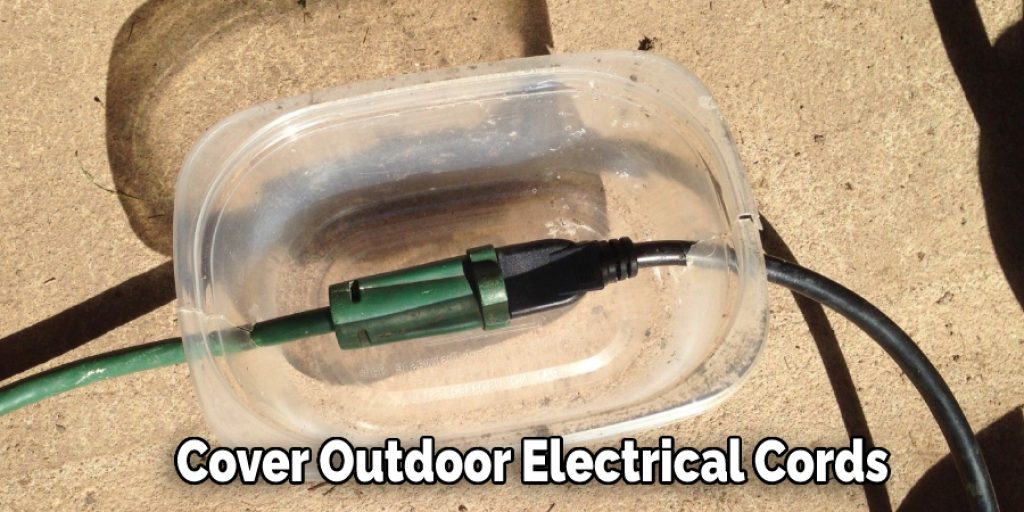
The second reason to cover electrical cords is to protect them from the elements. Exposure to sunlight, rain, snow, and ice can damage cords and shorten their lifespan.
Finally, covering electrical cords can help them last longer by keeping them clean. Debris and dirt can build up on exposed cords and cause problems.
A Detailed Guide on How to Cover Electrical Cords Outside
Method 1: Use PVC Conduit
PVC conduit is a type of electrical piping most commonly used in industrial and commercial settings. It is made from polyvinyl chloride (PVC), a durable, weather-resistant material. PVC conduit is available in various sizes and shapes to accommodate different types of electrical wiring.
PVC conduit is ideal for covering electrical cords outside because it is easy to work with and install. It is also very affordable and can be found at most hardware stores.
What You Will Need:
- PVC conduit (available in various sizes at most hardware stores)
- PVC primer
- PVC adhesive
- Electrical tape
- Utility knife
Step 1: Determine the size of the PVC conduit needed.
PVC conduit is available in various sizes, so it’s essential to choose the right size for your needs. The most common sizes are 1/2″, 3/4″, and 1″. If you’re unsure which size to get, ask a sales associate at the hardware store for help.
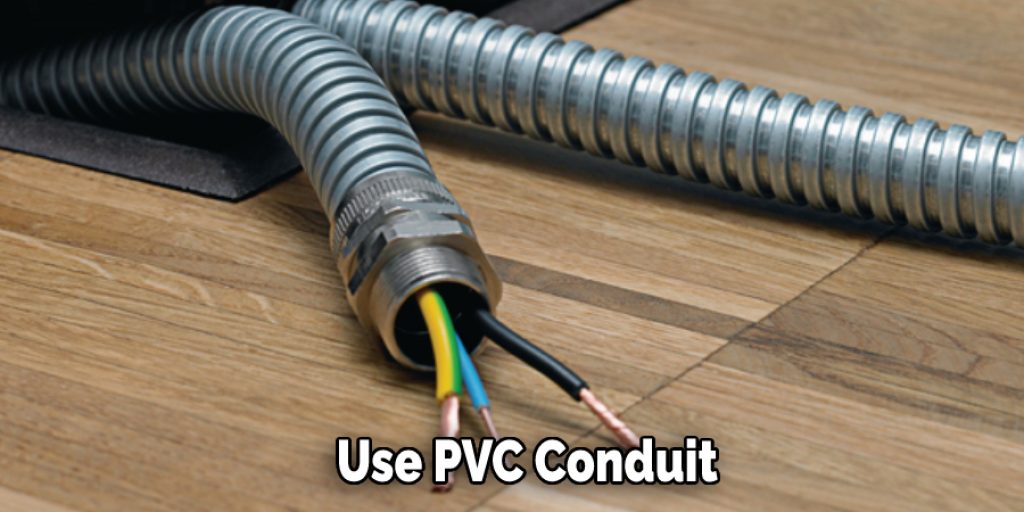
Step 2: Cut the PVC conduit to length.
Once you’ve determined the correct size of PVC conduit, use a utility knife to cut it to the desired length. Make sure toMeasure twice and cut once!
Step 3: Apply PVC primer to both ends of the PVC conduit.
PVC primer promotes adhesion between the PVC conduit and the adhesive. Apply primer to both ends of the conduit using a brush or rag.
Step 4: Apply PVC adhesive to one end of the PVC conduit.
PVC adhesive is used to join two pieces of PVC together. Apply a generous amount of adhesive to one end of the conduit.
Step 5: Join the two ends of the PVC conduit together.
Place the two ends of the PVC conduit together and twist until they are joined together. The adhesive will set in a few minutes.
Step 6: Apply electrical tape around the joints (optional).
You can apply electrical tape around the joints where the two pieces of PVC conduit are joined together for extra protection. This will help prevent moisture from getting inside and damaging the electrical wiring.
Step 7: Repeat steps 1-6 for each electrical cord.
Repeat the above steps for each electrical cord that you need to cover. Once all cords are covered, allow the adhesive to set for 24 hours before using the cords.
Method 2: Use Rubber Hose
Rubber hose is a type of tubing widely used in industrial and commercial applications. It is made from vulcanized rubber, a synthetic rubber type. The most common type of rubber hose is the air hose, which carries compressed air and gases. Other rubber hoses include water hoses, fuel hoses, and vacuum hoses.
The rubber hose has many benefits that make it ideal for use in various applications. It is durable and can withstand high temperatures and pressures. The rubber hose is also flexible and easy to connect. Additionally, it resists abrasion and weathering, making it ideal for outdoor applications.

What You Will Need:
- Rubber hose
- Hose clamps
- Wire ties
- Electrical tape
Step 1: Measure the Length of the Cord
Measure the length of the electrical cord that you need to cover. Then, cut a piece of rubber hose that is slightly longer than the cord.
Step 2: Attach the Hose to the Cord
Attach one end of the hose to the electrical cord using a hose clamp. Make sure that the clamp is tight so as not to come loose.
Step 3: Wrap the Wire Ties around the Hose
Wrap wire ties around the hose at intervals of about 6 inches. This will help keep the hose in place and prevent it from moving around.
Step 4: Cover the End of the Hose with Electrical Tape
Cover the end of the hose with electrical tape. This will help to keep the hose from coming off of the cord.
Your electrical cord is now safely covered with a rubber hose. This will protect it from being damaged by the elements and help keep it from being a tripping hazard.
Method 3: Use Spiral Wrap
Spiral wrap is a type of tubing that you can use to cover and protect your electrical cords. It’s easy to use – wrap it around the cord and secure it. Plus, it comes in various colors and sizes to find the perfect option for your needs.
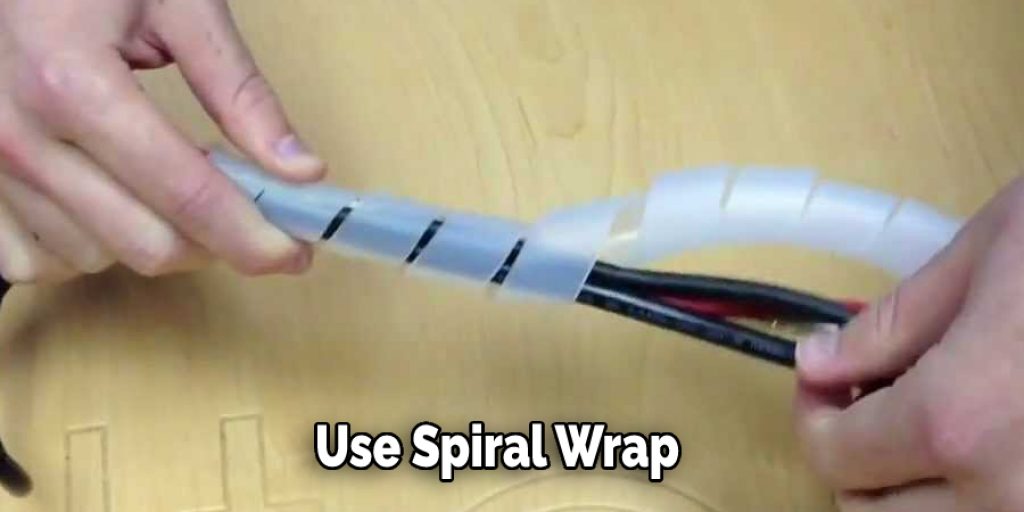
What You Will Need:
- Spiral wrap
- Wire ties
- Electrical tape
Step 1: Choose the Right Spiral Wrap
First, you’ll need to select the right spiral wrap for your needs. There are various options available, so be sure to choose one that is durable and weather-resistant.
Step 2: Wrap the Cord
Once you have the spiral wrap, wrap it around the cord. Start at the base of the cord and work your way up.
Step 3: Secure the Wrap
Once the spiral wrap is in place, use wire ties or electrical tape to secure it. This will ensure that it stays put, even in windy or rainy conditions.
And that’s all there is to it! By following these simple steps, you can easily cover and protect your electrical cords – no matter where they’re located.
Method 4: Use Extension Cord Cover
An extension cord cover is inexpensive to protect your cords from the elements. This type of cover is made of plastic and snaps together, closing around the extension cord. They are available in a variety of sizes to fit most standard cords. Extension cord covers are a great way to protect your cords from weather damage. They are also suitable for high-traffic areas where cords may be stepped on or run over.
What You Will Need:
- Extension cord cover
- Tape measure
- Utility knife
Step 1: Determine The Size Of The Cover You Need
Use a tape measure to determine the length and width of your extension cord. Most covers come in standard sizes, so you will need to know the dimensions of your cord to purchase the correct size cover.
Step 2: Cut The Cover To Size
If the cover you purchased is too large, you will need to cut it down to size. Use a utility knife to carefully cut the cover along the lines that indicate where it should be trimmed.
Step 3: Snap The Cover Around The Cord
Snap it around the cord once the cover is the correct size. Make sure that the cover completely covers the cord.
Step 4: Use Tape To Secure The Cover In Place (Optional)
If you are concerned about the cover coming off, you can use tape to secure it. Place a piece of tape over the seam where the two halves of the cover meet. This will help keep the cover in place and prevent it from falling apart.
Conclusion
We hope you have gone through the article on how to cover electrical cords outside. By following these methods, you can create an attractive and safe outdoor space perfect for entertaining. So have fun with your landscaping and enjoy the added benefits of keeping your cords hidden from view
You can check it out to Run a Cable Around a Door Frame

